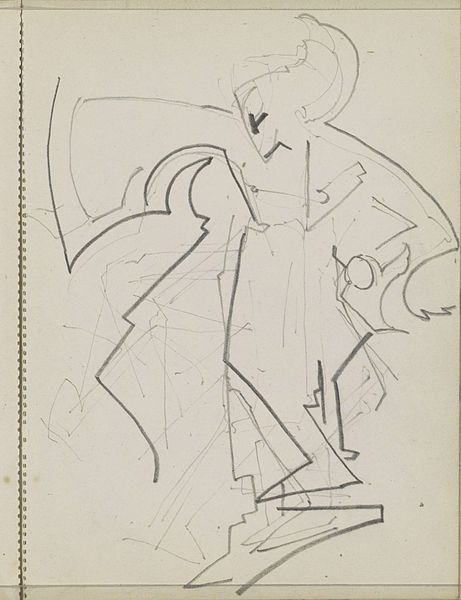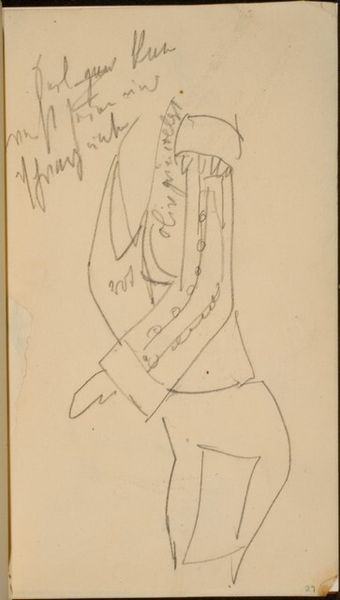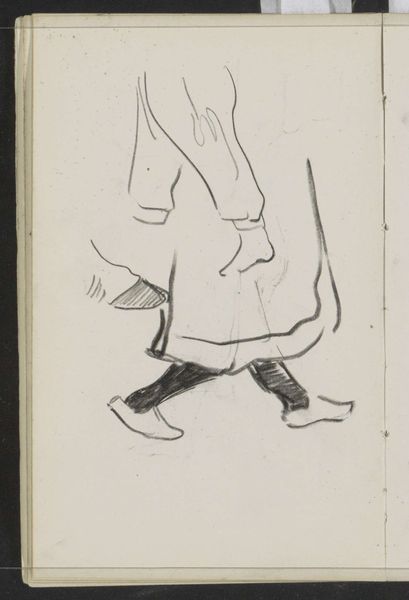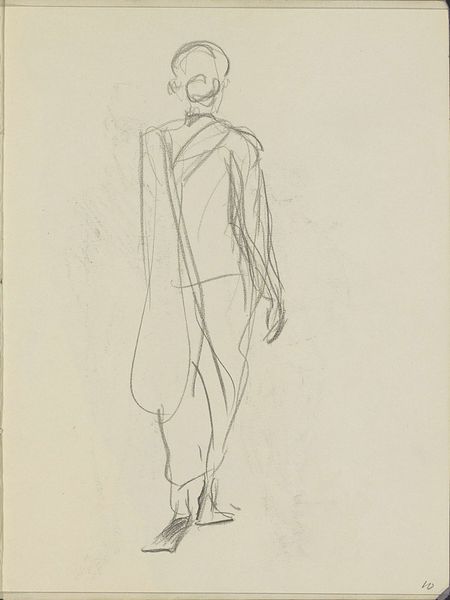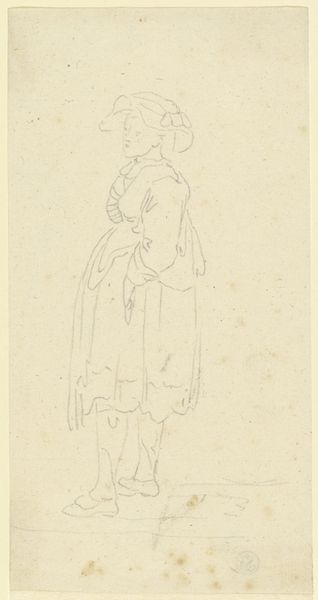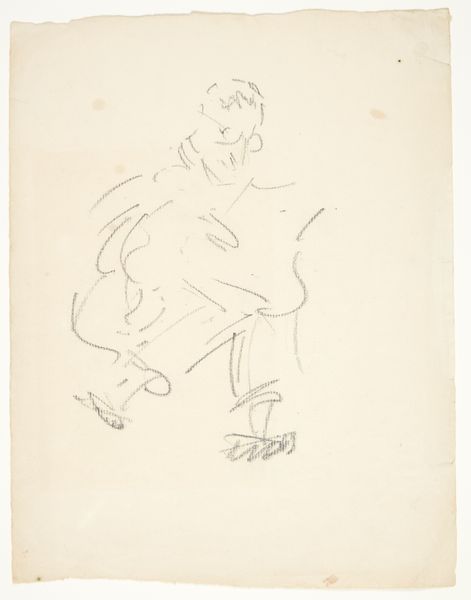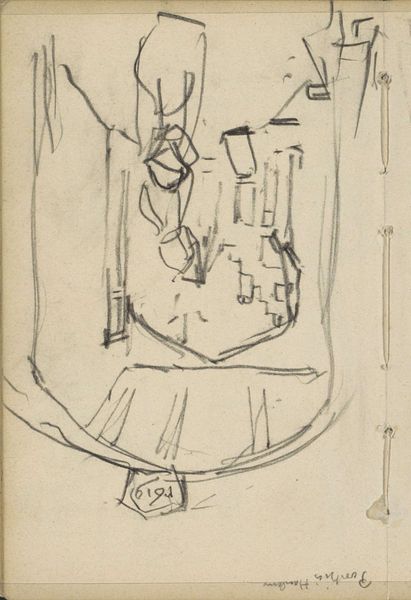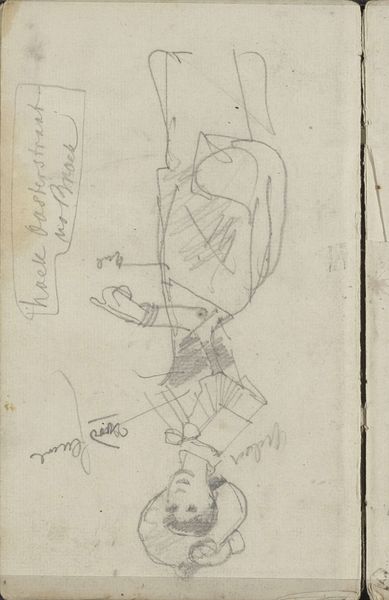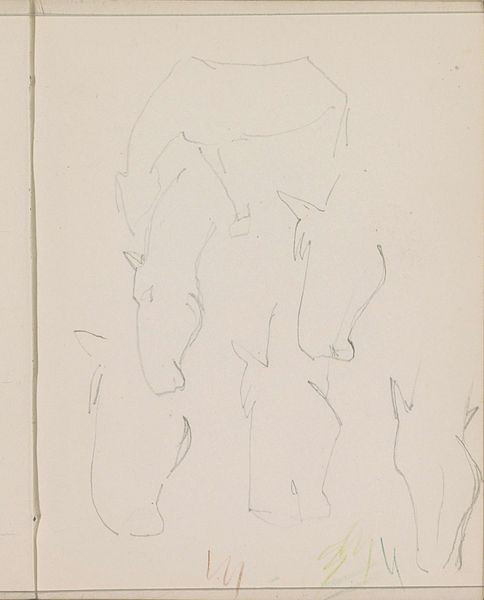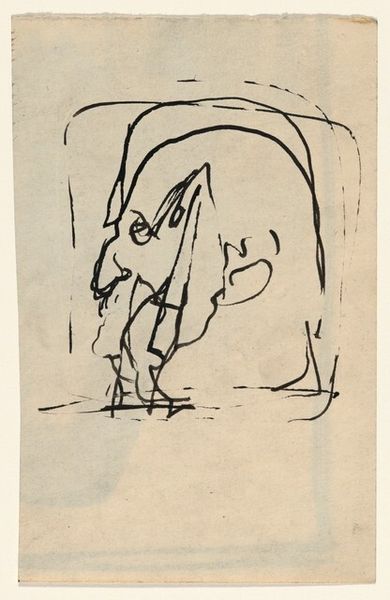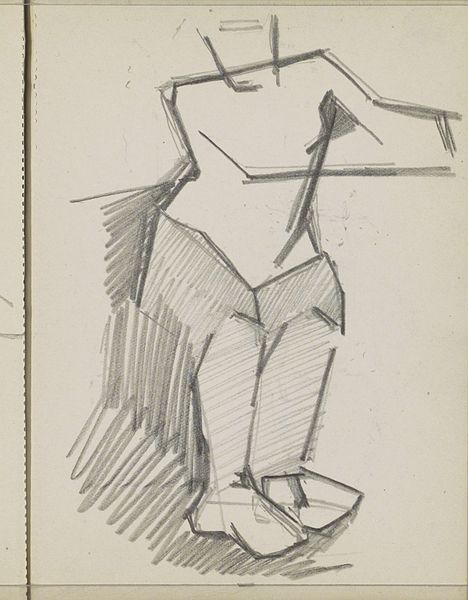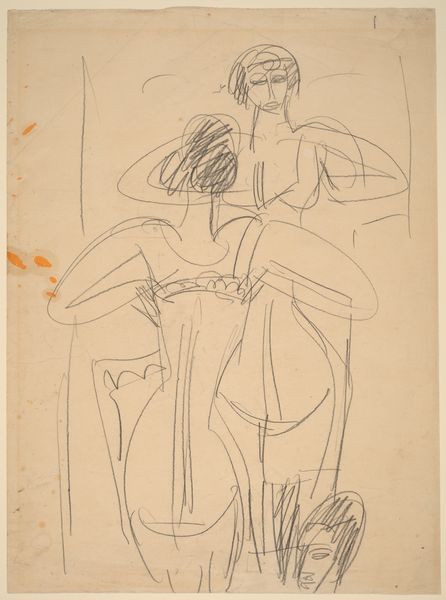
drawing, paper, watercolor, ink
#
portrait
#
drawing
#
figuration
#
paper
#
personal sketchbook
#
watercolor
#
ink
#
geometric
#
sketchbook drawing
#
russian-avant-garde
#
watercolour illustration
#
futurism
Dimensions: 54.2 x 35 cm
Copyright: Public domain
Curator: Here we have Kazimir Malevich’s "Soldier," created in 1913 using watercolor and ink on paper. Editor: My first thought? It feels playful, almost like a costume design, not a warrior. The asymmetry and the geometric shapes give it a whimsical quality. Curator: Well, that's partly because Malevich was deeply involved in theater at the time. This drawing, likely from a personal sketchbook, blends his interest in set and costume design with the emerging avant-garde movements of the time, particularly Futurism. The angular forms and fractured space echo Futurist ideals. Editor: Futurism makes sense. There’s a dynamism suggested, even though the figure is static. But, honestly, the colour choices are what really grabs me. The red diamond for a head – it's so unexpected, almost defiant. Curator: The choice of colours and the flattened perspective certainly reject traditional academic painting. He uses bold, contrasting hues and simplified forms, which was a radical move in pre-revolutionary Russia. It challenges the viewer to reconsider what constitutes a "soldier" and how they're represented. Think about how conventional military portraits would have looked. This subverts those expectations entirely. Editor: Absolutely. And you know, there's something both primitive and sophisticated about it. It feels raw and immediate, yet clearly informed by a deliberate artistic vision. The way he's almost deconstructed the figure – legs of different colours, the geometric touches. Is this soldier broken, or simply a concept of one? Curator: Precisely. By abstracting the figure, Malevich moves beyond mere representation and explores deeper symbolic meanings. This drawing foreshadows his later, purely abstract Suprematist works. He's dissecting form and pushing the boundaries of visual language. What does war *mean*, he seems to ask, instead of merely portraying a soldier in action. Editor: It's a fascinating transition to witness, especially in such a seemingly unassuming piece. Looking at it now, I feel a weird sense of peace about this "soldier," despite the subject. Curator: I find it an important illustration of how socio-political upheaval catalyzed radical artistic expression. Editor: A soldier transformed into a fascinating equation, perhaps? Food for thought, indeed.
Comments
No comments
Be the first to comment and join the conversation on the ultimate creative platform.
